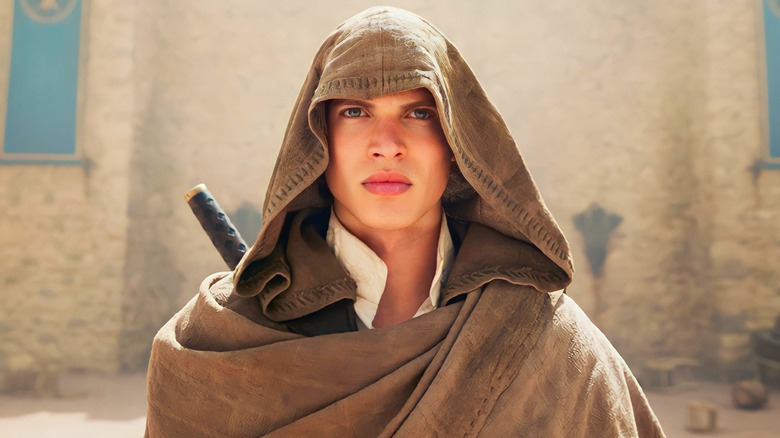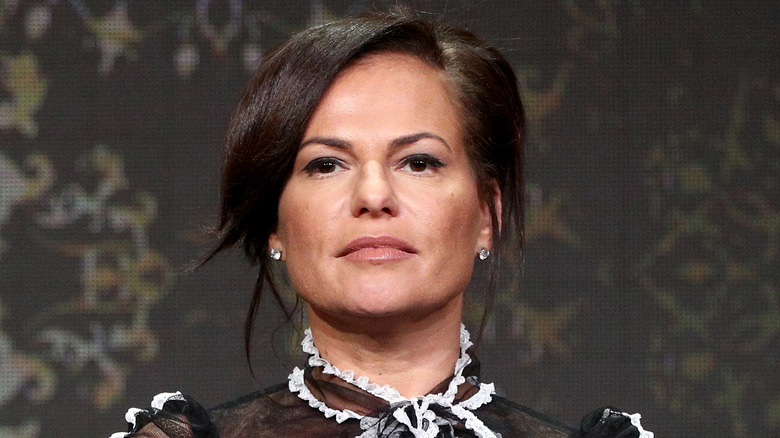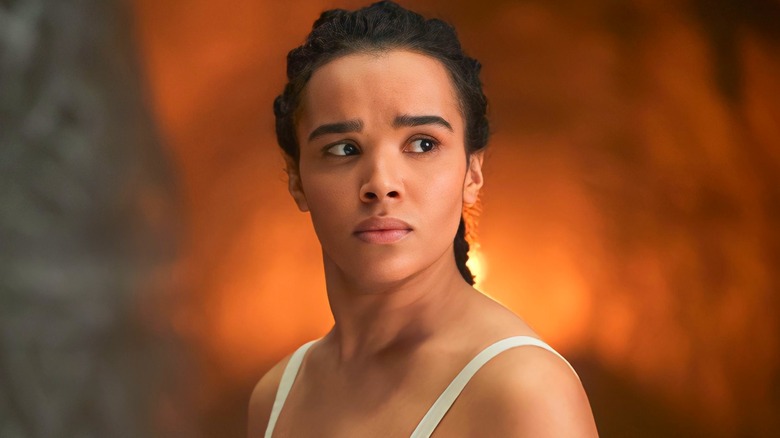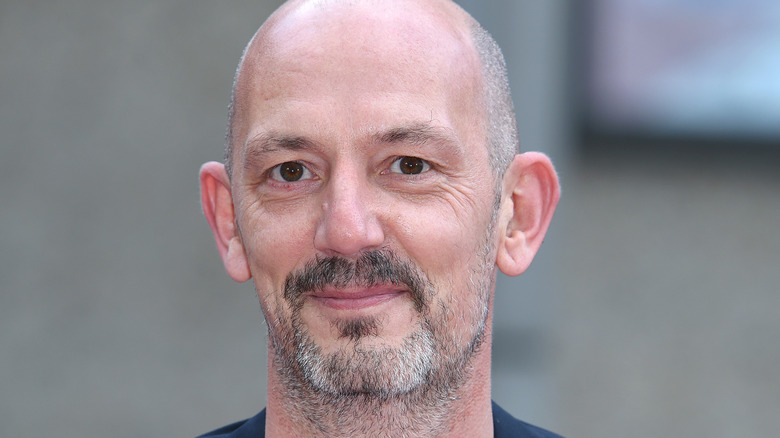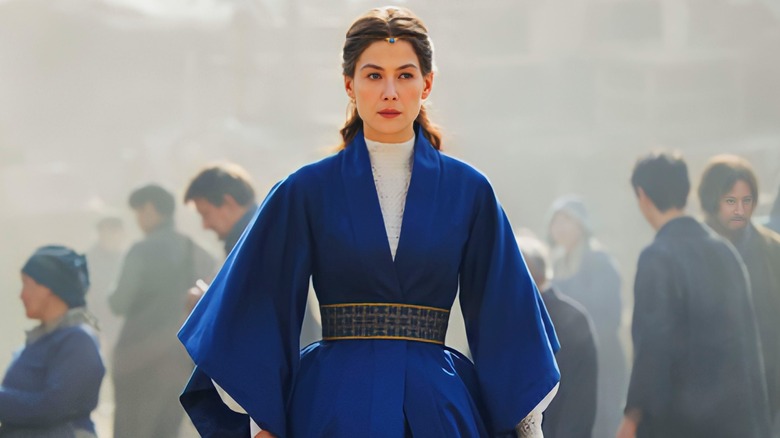The Wheel Of Time S2 Directors Hamri & Napper Think A Female-Powered World Was Overdue - Exclusive Interview
Rand al'Thor (Josha Stradowski), Nynaeve al'Meara (Zoë Robins), and the rest of the Two Rivers crew are in for fresh fantastical adventures in "The Wheel of Time" Season 2, the first few episodes of which dropped September 1 on Prime Video. Continuing the on-screen adaptation of Robert Jordan's bestselling novels, these new episodes feature the friends, as well as Moiraine Damodred (Rosamund Pike), scattered across the world and pursuing their own endeavors after it's discovered that Rand is actually the Dragon Reborn. There are more stories to tell and more worlds to bring to life, but the creatives working behind the scenes were up for the task.
Executive producer-director Sanaa Hamri and director Thomas Napper, both newcomers to "The Wheel of Time," enjoyed the chance to craft these individual plotlines and depict aspects of the book series — like the hierarchy of the White Tower and the perils of the arches — that go unexplored in Season 1. In an exclusive interview with Looper, Hamri and Napper shared details on how they built the separate journeys of Season 2, the production of Nynaeve's time in the arches, and the importance of the show's female-centric power structure.
Excited to be involved
Were either of you involved in Season 1, or are you both new to the show for Season 2?
Thomas Napper: New.
Sanaa Hamri: New.
How does it feel to come on board, and what made you want to get involved?
Hamri: Watching Season 1 and seeing the world of Jordan and the themes really drew me to the show. I found the characters fascinating in Season 1. I loved the diversity of the show. I especially loved seeing women in power, having the One Power and having their Warders. I was like, "That would be fun to have in real life." I was definitely happy to join Season 2 as the producer-slash-director and [jump] off of Season 1 and go further into the world.
Napper: I would echo that. Looking at the cast on paper, even without seeing Series 1, I was excited by the mix of people involved in the project — male, female — and diversity. [There's an] incredibly strong sense of international cast, Priyanka [Bose] from India, amazing actors from all over the world, actually. It's important to make work that extols that and supports that, and echoing Sanaa again, the political climate — the idea that we are seeing a world where women are in power, have all of the major roles within the power structure of the White Tower, and all of the significant characters are female — is long overdue. It felt thrilling to start to engage with that, to read the books very quickly to try and get on theme and try to soak up as much of the world as possible, because it's a huge universe and has a huge fanbase to go with it. [It's] exciting to be involved with it, genuinely.
I didn't realize there were so many books in the series!
Hamri: Yes — 14.
Envisioning the arches
One of my favorite moments of the new season is the introduction of the arches. Can you discuss your vision for bringing that to life and what went into creating those scenes?
Hamri: For the arch scene, first, it started with production design and working with [production designer] Ondrej [Nekvasil] in terms of where the arches go. It was key because it's really about Nynaeve's journey and what she is grappling with, and I find it very interesting that she goes in each arch and she has to face her fear. It's about facing your fear. With that as a filmmaker, creating this space where it can reflect that as she enters each arch, we go into another world. It was very exciting, very complicated sequences. There was a lot of camera movement because I wanted to reflect the way she was thinking inside and Nynaeve's internal dialogue of having to face her greatest fears. Hopefully, she's able to prevail. We'll have to watch and see.
Battle scenes take much time and effort
My other favorite parts are whenever there's a big battle scene, especially with the Trollocs, or if there's a new group being introduced. Can you talk about what goes into creating those big scenes with so many cast members on the set?
Napper: I can talk a little bit about Atuan's Mill, which is the battle at the end of Episode 2. We are very lucky on "Wheel of Time" to have an absolutely gold-standard stunt team led by Jan Petrina, but there are so many guys on that team that could easily be stunt coordinators and are, in fact, stunt coordinators independently. They worked for months with the actors to generate those action sequences. There's a lot of sweat equity in those sequences where actors with dad bods turn into ninja warriors, and it takes a long time to build the skill set to do that work and also to build the scale required where you want to see an army attacking a village.
There's a lot of technical preparation with wire work, there's a lot of stunt coordination with fight work, and then actors doing fight work is another level of difficulty because you're not using stunt doubles. [There was] huge amounts of prep and full dress rehearsals, full technical rehearsals, then going into night shoots, shooting it — five nights of battle, shooting at Atuan's Mill. It was a really exciting sequence — very big and lots of moving parts. Hopefully, we've captured the chaos of the attack and it's exciting to watch.
Hamri: On "Wheel of Time," I like the approach to the stunt sequences and the big fights that we will have — and we have a lot more in Season 2 — [but] we don't do action just for action's sake. We do action that services the story as well as the characters. It's more character-focused, and it's almost like a big ballet, whether it's sword fighting or hand-to-hand combat or whatever it is. It is like a ballet, and we don't want to be redundant. We try to lean into going through it [from] the perspective of the character versus just action shots so it will be scarier. There are a lot more scary moments in Season 2, but they're very crafted around story and character.
A deeper dive into Robert Jordan's world
Season 2 has a bit of a different vibe to it. In Season 1, it was very much the main four, and then they split off into pairs. In Season 2, they're all off doing their own thing. What was it like bringing all those more individual storylines together?
Napper: It felt like a fresh start to me. Coming into the show fresh, the first challenge was to try to work out how to build these separate worlds. Rand in the Foregate in Cairhien was a completely new environment — we've never seen that slum before — pairing with Loial (Hammed Animashaun) ... a lot of which we shot in Italy in the clay mines and clay hills of Calanchi.
Then [there's] the White Tower, where we went on a much deeper dive showing life for lots of different aspects of the White Tower. We see the life of novices; we engage — in Sanaa's episode, later — with the Accepted; we see the Warders at the Warders' training yard. We see different aspects of the White Tower than we have before. There's a lot of world-building that goes with the characters being separated. [It's] huge and thrilling to be part of designing and moving elements around to create those sets and those spaces.
Do you have any final words on why people should watch the new season?
Hamri: Everybody needs to watch Season 2 because it is bigger, and it has a lot more story because we are following each character. We get to know our characters a lot more. We shot all over the Czech Republic, in parts of Italy, and even Morocco in the Sahara Desert. You get to feel like you're on the journey with these characters. It's a lot more dangerous, [and] it's a lot [more] thrilling because we're continuing the story.
Napper: Absolutely. The difference with Season 2 — one of the fundamental differences — is that the characters have been plucked from their life in the Two Rivers in Series 1 and are grappling with the challenges of moving across the Jordan landscape. In Series 2, they have great responsibility thrust upon them. Rand knows now that he is the Dragon Reborn. We see the characters grappling with responsibility and growing up within the story. They're maturing and they're facing challenges that they couldn't have dreamt of in Series 1. As with the books, the show grows up with it — the characters are evolving in a very real way. It's fascinating to watch that, but it's also one of the great fantasy stories within literature, so hopefully, we've done that justice.
The first four episodes of "The Wheel of Time" Season 2 are available on Prime Video, with new episodes airing Fridays through October 6.
This interview has been edited for length and clarity.
